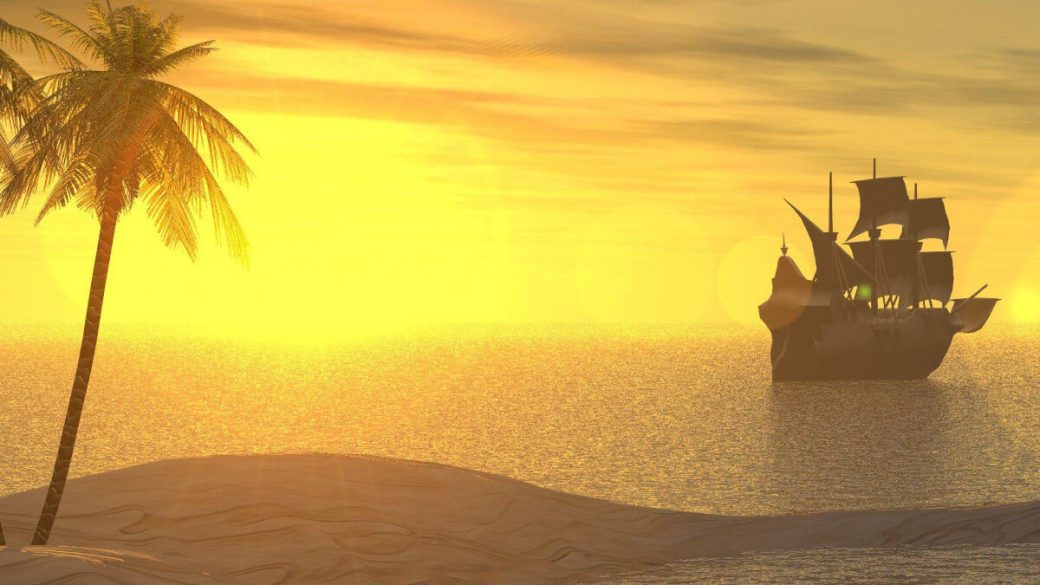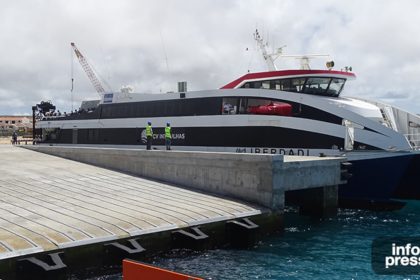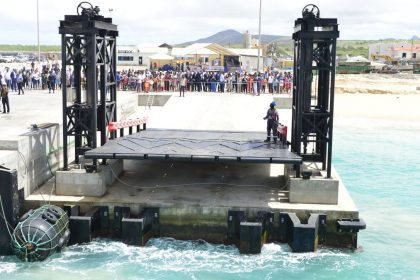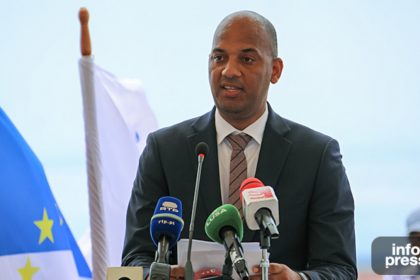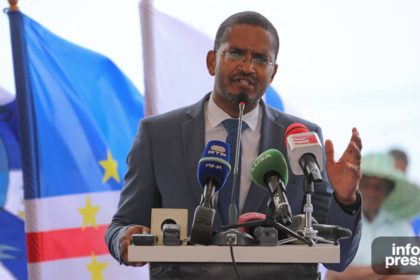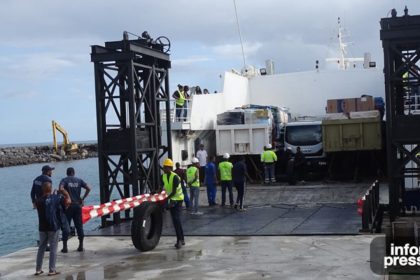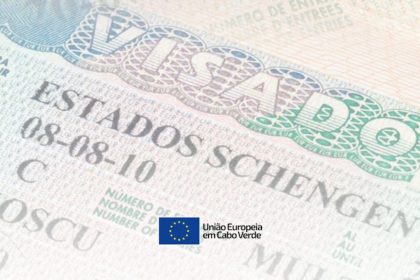Creation of legal and institutional bases, cataloging and inventorying of shipwrecks, training of authorities, communities and tour operators, these are some of the steps already taken by Cape Verde. Then, the creation of the tourist product will follow, a product that has generated millions of euros in destinations where it is already deployed.
“We have a concentration of almost 150 shipwrecks on the islands of Cape Verde, which still need to be studied in-depth, but above all for protection. Hence, at this stage, we are in no great hurry to turn it into a tourist product in the short term, until we have the necessary conditions to do so”, explained Jair Fernandes, president of the Cultural Heritage Institute, at the I Congress of Macaronesia Underwater Archeology which took place in Lanzarote, in the Canary Islands.
Once this work has been done, the objective, continued the responsible, the next objectives will include the inclusion of Cape Verde in the routes of tourism of underwater heritage in Macaronesia, but also in the world. Despite what is still ahead, there is a lot of work that has already been done, which includes training and awareness and the creation of an appropriate legal framework.
“The current intention”, said Jair Fernandes, “is to create all the legal institutional bases, but also to involve the community, because we are talking about a maritime territorial area of almost one million square kilometres”.
The President of the IPC presented the results of Cape Verde from the MARGULLAR project, at an event that brought together the project partners to present the results in their respective territories and is the result of more than two years of work within the scope of the Territorial Cooperation Project INTERREG MAC 2014-2020 MARGULLAR, co-financed by European ERDF funds.
The MARGULLAR project was developed in partnership with the islands of Macaronesia (Madeira, Azores, Canary Islands and Cape Verde), and aims to articulate Heritage and Tourism through the carrying out of underwater archaeology works for the preservation and conservation of marine heritage, to its subsequent enhancement and exploitation, with a focus on improving the attractiveness and promotion of tourism in these regions.
Cape Verde’s shipwreck route
The European expansion, which was called the first globalization because it created the notion of the planetarium, where the world saw itself as a whole for the first time, created new routes, discoveries and fixed in cartography.
The Atlantic archipelagos were the stopover points for the sea roads, which is why everyone made a superhuman effort to ensure their possession. In the case of Cape Verde, its possession was crucial to understanding who would get rich, not only in dealing with the Rio do Ouro Coast, now Senegal, and the Gulf of Guinea trade, but, above all, who could enjoy the winds alisios, in union with the equatorial current, which divides between north and south, connecting the first sea road to the Antilles, the second to Brazil.
Emanuel Charles d’Oliveira, in 2005, tried to place some systematization in the countless estimates, many of them exaggerated, about the number of shipwrecks that occurred in Cape Verde’s seas, refocusing their number around three hundred. This study allowed, for the first time, to have a realistic, serious and profound perception of this theme.
Paulo Alexandre Monteiro, in 2019, based on historical sources from archives and fundamental bibliography, estimated the number of shipwrecks that occurred off Cape Verde by one hundred and a half, but, as he himself declared, the sources used were mainly Portuguese, assisted in Lloyds records are partly Spanish, with the historical archives of other European maritime nations still lacking, which will certainly have additional information of obvious interest.
Alexandre Monteiro, a researcher at Universidade Nova de Lisboa (UNL), is a technical and scientific consultant at the Cape Verde Cultural Heritage Institute for the survey and inventory of Cape Verde’s underwater cultural heritage. For years, the archaeologist gathered information about the ships that sank, in what situation and what their history is. From this study, the database emerged.
Among the shipwrecks in Cape Verde with georeferenced data is that of the ship “John E. Schmeltzer” which, by sinking with corn off the island of Santo Antão, in 1947, allowed thousands of Cape Verdeans to survive hunger. The Portuguese Navy hydrographic vessel “Dom João de Castro”, which was lost on Penedo da Janela beach, on the island of Santo Antão, also in 1947, is duly catalogued, as well as the Brazilian steamships “Acary” and “Guahyba”, sunk in 1917 by the German submarine U151, in Porto Grande de São Vicente.
The Portuguese schooner “Livramento”, wrecked with the Governor of Cape Verde in Rabo de Junco Bay, on the island of Sal, in 1868, and the anti-black sloop USS “Yorktown”, of the US Navy, lost in 1850 on the island of Maio, are also included in the database. In this catalogue are the Honorable East India Company ships “Hartweel”, lost in Boavista in 1787, with six tons of silver on board, and the “Lady Burgess”, lost with a treasure in downtown João Valente, between Boavista and May Island, in 1806.
The Portuguese galleon “Nossa Senhora da Conceição”, by Field Master António Moniz Barreto, weighing 430 tons and 24 cannons, with 200 soldiers and 100 gunners, can also be consulted in this database. It is a vessel that was lost due to a navigation error when it was preserved in the surrender fleet in Bahia, Brazil. 50 people died.
The challenges faced by underwater heritage
As Jair Fernandes summarized during the congress, “our big problem is: how to defend our seas?”.
The first concession to explore the Cape Verdean seas took place on April 3, 1913. It was granted to Raúl Barbosa, a resident of Praia, who was able to examine the coasts of the islands of Fogo, Maio, Brava, Sal, São Nicolas and Saint Vincent. This was followed by Virgílio Martins Correia, with ten years of concession, from 1955, to the seas off the islands of São Vicente, Sal and Boavista and, later, in 1967, for three years, to the society constituted by António Monteiro and Jorge Fonseca, for the underwater depths near the islands of São Vicente, Santo Antão, Sal and Boavista.
Carlos Carvalho [“Trade Routes and Cape Verde’s Underwater Cultural Heritage”. CulturAzores. Revista de Cultura] adds another beneficiary, Calema – Sociedade Concessionária de Salvados in the Seas of Cape Verde, saying that it intends to operate in Cidade Velha on the island of Santiago and on the island of Boavista, but what little is known about this development is reduced to a piece put up for auction in 2017.
Although Calema appears to have been the first company of “treasure hunters” in Cape Verde’s seas, it was not the only one. Independence heightened the greed of the “treasure hunters”, who saw in the young republic, which did not have sufficient technical staff, in quantity and experience, in the State apparatus, an attractive target for these practices.
Nireide Tavares [Archaeological Inventory of Cape Verde: contribution to a tool for the management and enhancement of Cultural Heritage. Master’s thesis in Archeology presented to the University of Lisbon] listed the suitors: Robert F. Marx, formalized his intention in 1980, Robert Stenuit, another well-known hunter, followed suit, having been pursued at the request of Rex Cowan, Erick Surcouf and R. Gisselbrecht, the Dutch Underwater Group, the Howed Finance Corporation, the World Wide First, represented by Franck Goddio and Edmound Balm, and Mel Fisher Enterprises.
Although underwater explorations predated independence, it was only in 1993 that “treasure hunters” entered the territory, first with Afrimar, a South African company that operated in three shipwrecks, Leymuiden, Hartweel and Santo André, off the coast of Ilha da Boavista, between 1993 and 1995, and then with Arqueonautas World Wide, which entered in 1995. This company worked until 2001, covering the funds throughout the national territory, having discovered, identified and removed archaeological material from around eighty shipwrecks. They also worked on the Old Town pier for a while.
Of the recovered assets that remained in Cape Verde, part is on display and the other is in reserve at the Praia Archeology Museum. However, what the companies sought, and successfully managed, was to put up for auction a part of the recovered parts. The first took place in September 1997, at Christie’s in Amsterdam, and the second in December 2000, at Sotheby’s in London.
More recently, earlier this month, US divers were caught looting a wrecked galleon on the island of Maio. A detection that, according to the president of the IPC, was only possible due to the work done in recent years. “The treasure hunters on the island of Maio who were denounced by island divers. That’s why the action of the local community is so important”.
Underwater Heritage Management Strategies
Jair Fernandes said that Cape Verde is going to ratify the Convention Against Illicit Traffic in Cultural Property in the Canary Islands, which turns out to be a convention that complements the 2001 one.
Before, in the first half of 2019, Cape Verde deposited with UNESCO the ratification of the international convention for the protection of underwater cultural heritage, from 2001, thus positioning itself as a full member of this important international treaty.
This Convention, made up of 35 articles and annexes, aims to enable States Parties to strengthen the protection of this heritage and is an instrument that represents the response of the international community to the increase in looting and destruction of underwater cultural heritage. It represents a “lex specialis”: a regulatory instrument that specifically applies to underwater cultural heritage.
Also this month, during the 41st UNESCO General Conference, which took place in Paris, the Minister of Culture, Abraão Vicente, asked the organization for technical support to consolidate the mapping of shipwrecks in the archipelago.
“Cape Verde at this moment does not have all the financial conditions to carry out the mapping. Our main concern is with the creation of projects financed by international partners that allow us to carry out underwater exploration. In other words, much more than alerting everyone to pay attention so that no one steals, we want to extract artefacts from the seabed for research, cataloguing and also enrich our museum collection”, said the government official.
Cabo Verde quer entrar na rota mundial do turismo de mergulho – Expresso das Ilhas
#maiocapeverde #maiocaboverde #visitcapeverdemaio #visitcaboverdemaio #capeverde #caboverde #nostress #visitmaio #maioisland #ilhadomaio #visitilhadomaio #maio #morromaio #portoingles #portoinglês #viladomaio #kapverden #beach #beachlife #paradisebeach
